Effective Solutions for Lighting in Marine Installations
Marine installations, including ships, ports, offshore platforms, and navigational aids, demand lighting systems that can withstand the harsh conditions of the open seas while providing reliable illumination for safety, navigation, and operational efficiency. Designing effective solutions for marine lighting requires a unique set of considerations and innovative solutions.
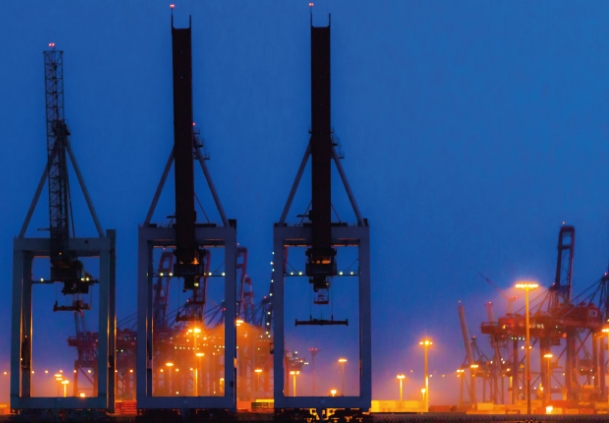
The Vital Role of Lighting in Marine Installations
Lighting serves as a beacon of safety, efficiency, and functionality in the vast expanse of marine environments, where every vessel, port, and navigational point relies on illumination for a myriad of purposes.
1. Safety at Sea
Safety is paramount in maritime operations, and lighting plays a crucial role in ensuring the well-being of vessels, crew, and passengers. Navigation lights guide ships through treacherous waters, marking safe passage and alerting nearby vessels to their presence. These lights, along with lighthouses, buoys, and beacons, help prevent collisions and groundings, particularly in low visibility conditions such as fog or darkness.
2. Navigation and Positioning
Marine lighting aids navigation by providing visual cues and reference points for determining a vessel’s position, course, and heading. From channel markers to port lights, navigation aids are essential for guiding ships safely into harbors and navigating through narrow channels and congested waterways. Properly illuminated navigation points enable mariners to plot their course accurately and avoid hazards, ensuring smooth and efficient maritime traffic flow.
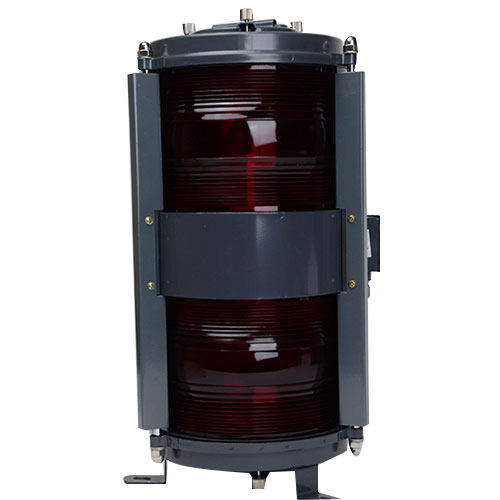
3. Operational Efficiency
Efficient marine lighting systems are vital for facilitating smooth and productive operations in marine installations such as ports, shipyards, and offshore platforms. Well-lit cargo handling areas, container terminals, and dockyards enable efficient loading and unloading operations, reducing turnaround times and optimizing vessel schedules. Additionally, illuminated workspaces and equipment on ships and offshore facilities enhance productivity and safety for crew members performing maintenance, repair, and inspection tasks.
4. Emergency Preparedness
In emergencies and distress situations at sea, lighting systems plays a critical role in signaling for help, guiding rescue efforts, and ensuring the safe evacuation of vessels. Emergency lighting systems, including distress signals, strobe lights, and illuminated escape routes, provide crucial visibility and guidance during power outages, fires, or other onboard emergencies. These lighting systems are essential for maintaining order and facilitating swift and effective responses to crisis situations.
5. Crew Comfort and Well-being
Lighting also contributes to the comfort, well-being, and morale of crew members onboard ships and marine installations. Adequate illumination in living quarters, mess halls, and recreational areas enhances the quality of life for crew members during extended voyages or offshore assignments. Additionally, lighting that mimics natural daylight cycles can help regulate circadian rhythms, improve sleep patterns, and reduce fatigue among crew members, promoting overall health and productivity.
Challenges of Lighting in Marine Installations
1. Corrosion and Saltwater Exposure
One of the primary challenges facing lighting systems in marine installations is corrosion caused by exposure to saltwater and saline air. Corrosion can degrade lighting fixtures and electrical components, leading to malfunctions, reduced performance, and safety hazards. Designing lighting fixtures with corrosion-resistant materials such as stainless steel, marine-grade aluminum, or specialized coatings is crucial to prolonging their lifespan and maintaining functionality in corrosive marine environments.
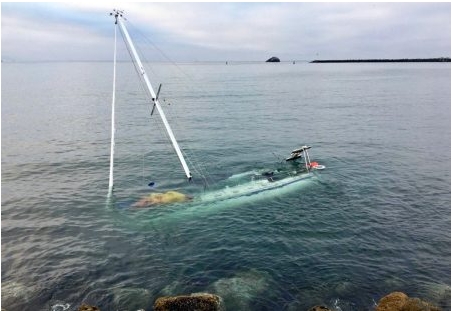
2. Vibration and Shock
Marine installations, particularly ships, are subject to constant motion, vibration, and shock from waves, engine operations, and cargo handling activities. These dynamic forces can compromise the stability and integrity of lighting fixtures, leading to loosening of connections, misalignment, or physical damage. Implementing shock-resistant designs, secure mounting mechanisms, and vibration-dampening materials can help mitigate the effects of motion and ensure the reliability and durability of lighting systems onboard vessels and marine structures.
3. Regulatory Compliance
Marine lighting must comply with stringent regulations and standards established by international maritime organizations and national authorities to ensure the safety and legality of maritime operations. These regulations govern various aspects of lighting, including navigation lights, signal lights, emergency lighting, and safety lighting requirements for ships, ports, and offshore installations. Meeting regulatory compliance entails thorough testing, certification, and adherence to specific guidelines, adding complexity and cost to the design and implementation of marine lighting systems.
4. Harsh Environmental Conditions
Marine installations are exposed to a range of harsh environmental conditions, including high winds, extreme temperatures, salt spray, and UV radiation. These environmental factors can accelerate wear and tear on lighting fixtures, degrade materials, and compromise performance over time. Implementing weatherproof designs, UV-resistant coatings, and thermal management systems can help protect lighting systems from environmental damage and ensure reliable operation in challenging marine conditions.
5. Maintenance and Accessibility
Maintenance of lighting systems in marine installations can be challenging due to the remote locations, limited access, and logistical constraints associated with offshore platforms, buoys, and navigational aids. Routine inspections, cleaning, and repairs may require specialized equipment, personnel, and coordination with maritime authorities or vessel operators. Designing lighting systems with modular components, easy-access enclosures, and remote monitoring capabilities can facilitate maintenance tasks and minimize downtime, ensuring continuous operation and compliance with regulatory requirements.
Innovative Solutions for Lighting in Marine Installations
1. LED Technology
Light Emitting Diode (LED) technology has revolutionized marine lighting with its energy efficiency, durability, and versatility. LED fixtures offer significant advantages over traditional lighting sources, including lower power consumption, longer lifespan, and resistance to shock and vibration. In marine installations, LED lights provide bright, uniform illumination while withstanding the corrosive effects of saltwater and harsh environmental conditions. Additionally, LED signal lights enables dynamic lighting designs, such as color-changing capabilities for signaling or aesthetic purposes, enhancing safety and aesthetics in marine environments.
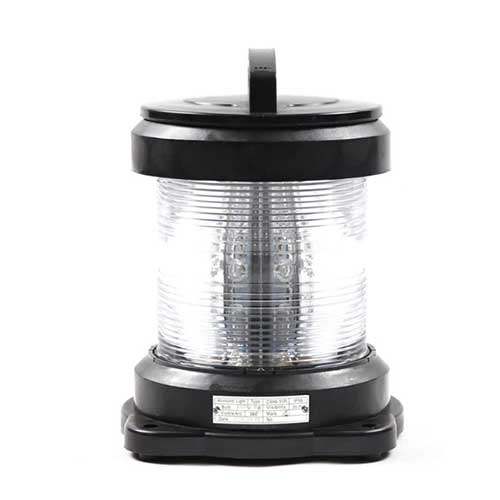
2. Modular and Adaptive Designs
Modular lighting systems with interchangeable components and flexible configurations offer versatility and ease of maintenance in marine installations. By incorporating modular designs, lighting fixtures can be easily replaced or upgraded without requiring extensive downtime or costly repairs. Adaptive lighting solutions, equipped with sensors and intelligent controls, adjust brightness levels based on environmental conditions, occupancy, or task requirements, optimizing energy usage and enhancing user comfort. These adaptive designs contribute to greater efficiency and sustainability in marine lighting while ensuring consistent performance in dynamic maritime environments.
3. Corrosion-Resistant Materials
Utilizing corrosion-resistant materials is essential for prolonging the lifespan and reliability of lighting fixtures in marine installations. Stainless steel, marine-grade aluminum, and specialized coatings provide protection against the corrosive effects of saltwater, preventing degradation and ensuring long-term functionality. Innovative materials and manufacturing techniques, such as nano-coatings and composite materials, enhance resistance to corrosion while maintaining lightweight and durable properties. By incorporating corrosion-resistant materials into lighting designs, marine installations can mitigate the risks associated with saltwater exposure and minimize maintenance requirements.
4. Solar-Powered Lighting
Solar-powered lighting offers a sustainable and cost-effective solution for remote or off-grid marine installations, such as navigational buoys, beacons, and offshore platforms. Solar panels harness renewable energy from the sun to power LED lighting systems, reducing reliance on fossil fuels and minimizing carbon emissions. Battery storage systems store excess energy for use during periods of low sunlight, ensuring continuous operation day and night. Solar-powered lighting solutions provide reliable illumination in remote marine environments while promoting environmental sustainability and reducing operational costs.
5. Smart Lighting Controls
Integration of smart lighting controls enables advanced functionality and remote management of lighting systems in marine installations. IoT (Internet of Things) technology, combined with sensors and wireless connectivity, allows for real-time monitoring, scheduling, and optimization of lighting operations. Smart controls enable dynamic adjustments to lighting levels based on factors such as weather conditions, vessel traffic, or user preferences, enhancing safety, energy efficiency, and user experience. Additionally, predictive analytics and data-driven insights optimize maintenance schedules and identify potential issues before they affect performance, ensuring reliable operation and minimizing downtime in marine lighting systems.
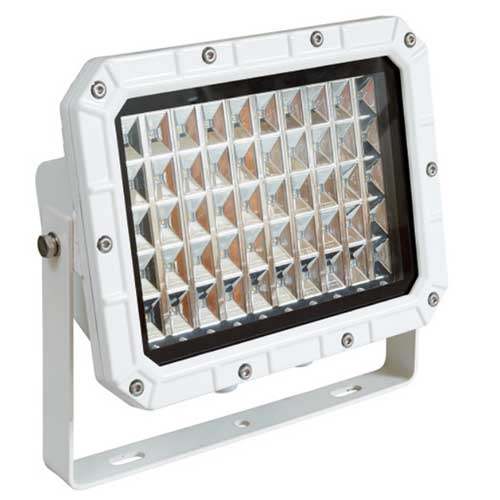
Future Trends of Lighting in Marine Installations
1. Integration of Renewable Energy
The adoption of renewable energy sources, such as solar and wind power, is poised to revolutionize lighting in marine installations. Solar-powered lighting solutions, including navigational aids, buoys, and offshore platforms, harness the abundant energy of the sun to provide reliable illumination while reducing reliance on traditional fuel-based generators. Wind-powered lighting systems, utilizing small-scale wind turbines or vertical axis wind turbines, offer another sustainable alternative for remote or off-grid marine installations. The integration of renewable energy sources promotes environmental sustainability, reduces operating costs, and minimizes carbon emissions in maritime operations.
2. Advanced Materials and Coatings
Innovations in materials science are driving the development of advanced coatings and materials with enhanced durability and resistance to corrosion in marine environments. Nanotechnology-enabled coatings, polymers, and composite materials offer superior protection against saltwater exposure, UV radiation, and abrasive wear, prolonging the lifespan of lighting fixtures and reducing maintenance requirements. Furthermore, the use of lightweight and recyclable materials promotes sustainability and reduces the environmental footprint of marine lighting systems.
3. Human-Centric Lighting Design
Human-centric lighting design, focused on improving well-being, productivity, and comfort, is gaining prominence in marine installations. By mimicking the natural rhythms of daylight, human-centric lighting systems regulate circadian rhythms, enhance mood, and promote better sleep quality among crew members onboard ships and offshore platforms. Dynamic lighting controls, adjustable color temperatures, and personalized lighting settings cater to individual preferences and optimize the visual environment for various tasks and activities. Human-centric lighting design enhances crew morale, productivity, and overall satisfaction, contributing to safer and more comfortable maritime operations.
4. Artificial Intelligence and IoT Integration
The integration of Artificial Intelligence (AI) and Internet of Things (IoT) technologies enables intelligent monitoring, control, and optimization of lighting systems in marine installations. AI algorithms analyze data from sensors, weather forecasts, and vessel traffic patterns to dynamically adjust lighting levels, optimize energy usage, and enhance safety and efficiency. IoT-enabled lighting controls offer remote management capabilities, allowing for real-time monitoring, diagnostics, and predictive maintenance of lighting fixtures. Advanced analytics and machine learning algorithms identify patterns, anomalies, and opportunities for optimization, driving continuous improvement in marine lighting performance and reliability.
Conclusion
Lighting solutions for marine installations must meet stringent requirements for durability, reliability, and compliance while addressing the unique challenges of the marine environment.
As advancements continue in sustainability and smart technologies, the future of marine lighting holds promise for safer, more efficient, and environmentally conscious maritime operations.


